As summer approaches and water temperatures rise, jellyfish begin to emerge in large numbers across the Mediterranean Sea. These captivating creatures, while often beautiful, can also pose risks to swimmers. This comprehensive guide introduces the most common jellyfish species found in the Mediterranean, their physical traits, habitats, and whether or not their stings are harmful to humans. Learn how to identify them and stay safe at the beach.
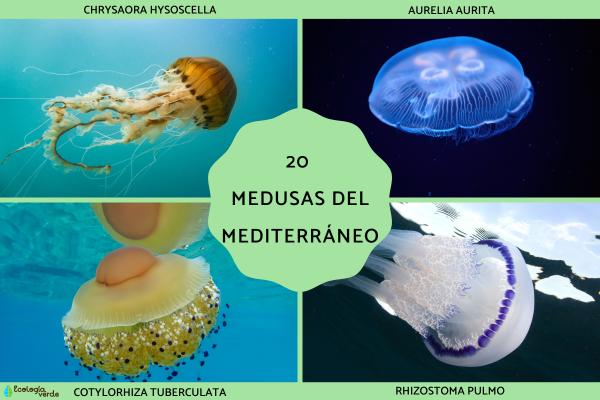
Easily recognized by the brown radiating lines on its white bell, resembling a compass. It can reach up to 30 cm in diameter, with tentacles growing as long as 5 meters. Its sting can cause painful welts and skin irritation. Although mostly offshore, it often drifts closer to beaches in the summer.

Translucent with a bluish-white hue and a bell up to 25 cm across. It’s identifiable by four circular gonads visible beneath the bell. While it produces mild electric-like stings, it is harmless to humans. Frequently found in enclosed or coastal areas like the Mar Menor lagoon.

This species belongs to the box jellyfish group and features a cube-shaped bell measuring just 3 cm wide. It has four long tentacles up to 30 cm in length, often marked with red stripes. Its sting is painful and potentially harmful. Endemic to the Mediterranean, it lives around 20 meters deep and is difficult to spot due to its transparency.
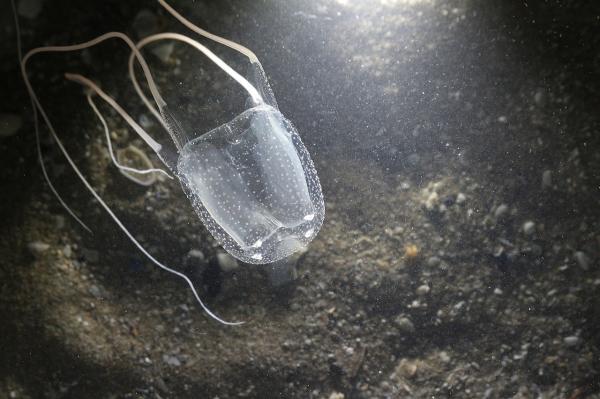
Not a true jellyfish, but a siphonophore – a colonial organism made up of specialized individuals. It has a purple air-filled float with pinkish sails that allow it to drift with the wind. Beneath it hang tentacles that can reach 20 meters and deliver dangerous neurotoxic stings. Contact can result in severe burns or even death.

Another siphonophore, featuring a flattened, disc-like float with vibrant blue tentacles made of hydroid colonies. Its stings are mild and cause only light skin irritation – generally harmless to humans.

Known for its distinctive appearance, the jellyfish has a yellow central disc surrounded by a white ring, resembling a fried egg. Below hang thick oral arms with clusters of purple and white spots. Common in both open waters and coastal zones, especially in the Mar Menor. It is considered harmless.
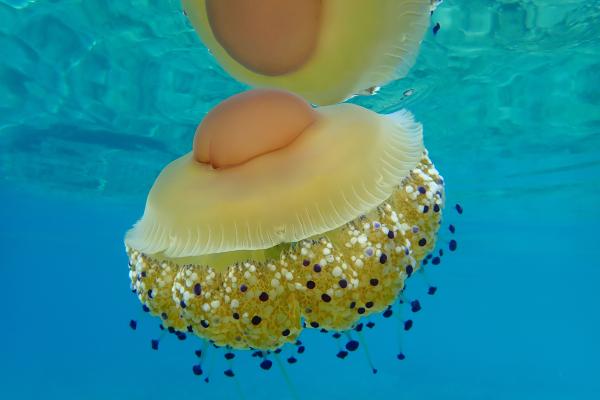
One of the largest jellyfish in the Mediterranean, with a bell diameter reaching up to 100 cm. The bell is white with blue lobed edges, and its oral arms are thick and joined at the base. Contact may cause mild itching, but stings are generally not serious.
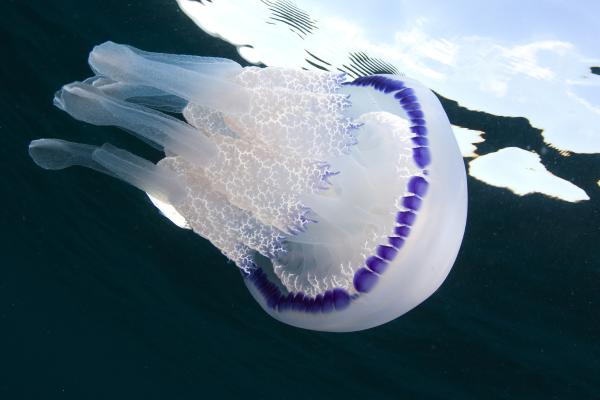
This species has increased in number due to climate change. It has a dome-shaped bell about 8 cm wide and thin blue tentacles. It’s bioluminescent, making it especially visible at night. Often seen near shorelines.
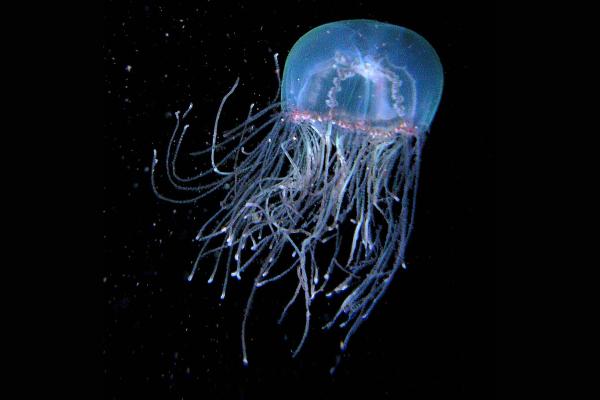
Typically found in open seas but also moves toward the coast. It forms dense swarms and is known for its painful sting. Its body is transparent with a pink interior and spots that hold potent stinging cells. Tentacles can reach up to 20 meters and may cause large wounds that heal slowly and are prone to infection.
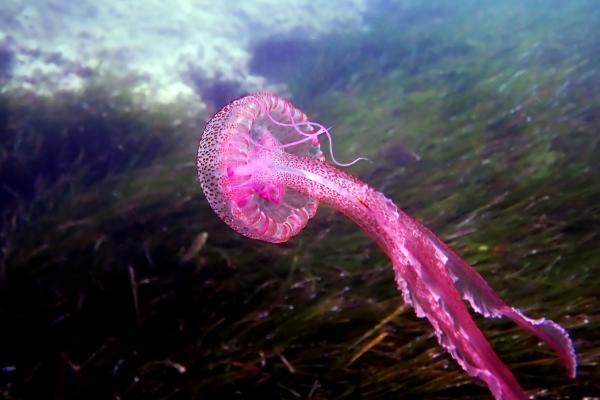
Here are additional jellyfish and cnidarian-like creatures found in the Mediterranean:
Many-ribbed jellyfish (Aequorea forskalea)
By-the-wind sailor (Velella velella)
Nomad jellyfish (Rhopilema nomadica) – invasive species
Comb jellies (Mnemiopsis leidyi, Beroe ovata) – lack stinging cells
Bell jellyfish (Gonionemus vertens) – may trigger neurological symptoms
Golden rootmouth jellyfish (Rhizostoma luteum) – rare species
Leucothea multicornis – a fast-moving ctenophore
Conical jellyfish (Pandea conica) – long bell-shaped form

While many jellyfish are harmless, some species like the Portuguese Man o’ War or Mauve Stinger can pose serious risks. Before heading to the beach, check local warnings or advisories about jellyfish presence. If stung, rinse with seawater (not fresh water) and seek medical attention when necessary.
[Top 10 Most Dangerous Sea Creatures]
[What Are Cnidarians? Characteristics and Examples]
[Jellyfish Safety Tips for Swimmers and Tourists]
Want to learn more about fascinating ocean wildlife? Visit our Wildlife Encyclopedia for expert insights and updated species profiles.
animal tags: Mediterranean Jellyfish
We created this article in conjunction with AI technology, then made sure it was fact-checked and edited by a Animals Top editor.